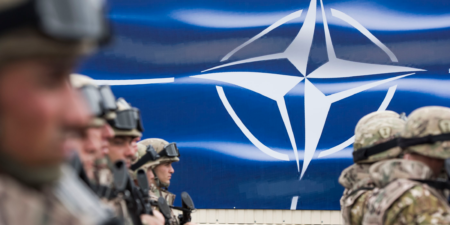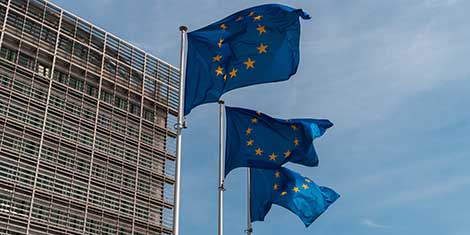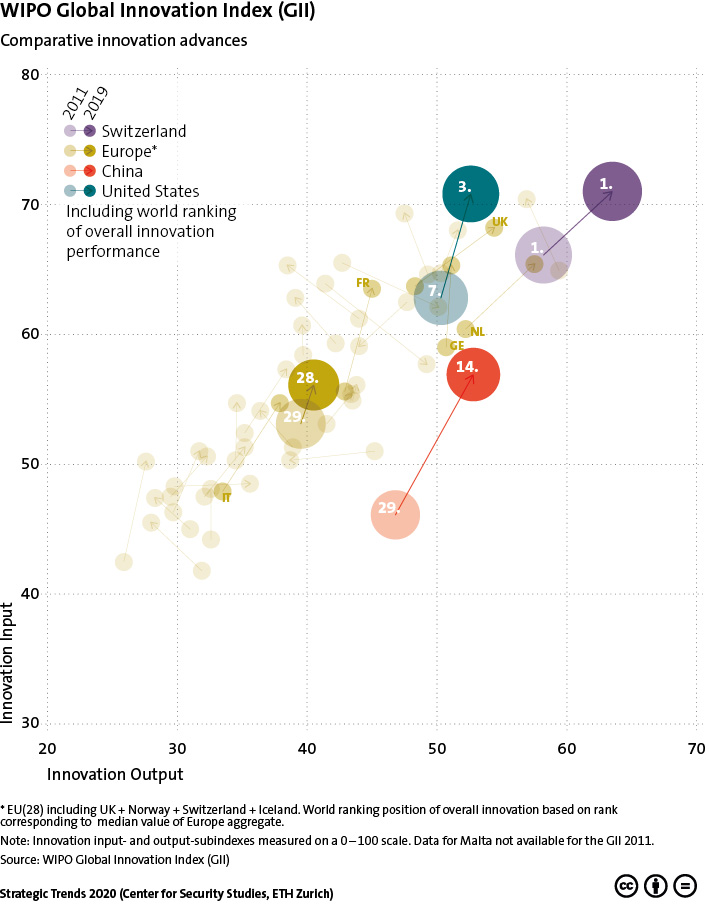
As this graphic illustrates, since 2011 China has increased its investments in innovation to great effect. China’s tech industry now rivals its European counterparts, which puts pressure on European nations to engage in constant economic innovation in order to uphold Europe’s long-held comparative advantage.
For an insight into the implications of China’s Belt and Road Initiative (BRI) and targeted influence attempts in Europe, read Linda Maduz and Henrik Larsen’s Strategic Trends 2020 chapter here.

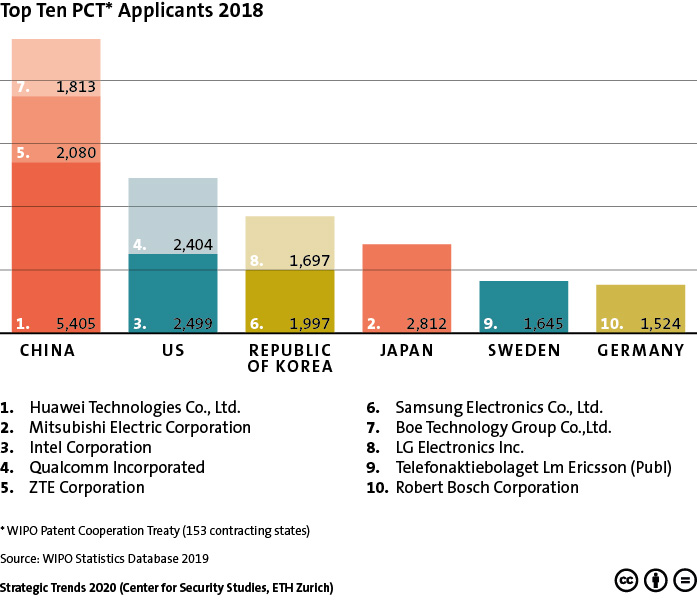
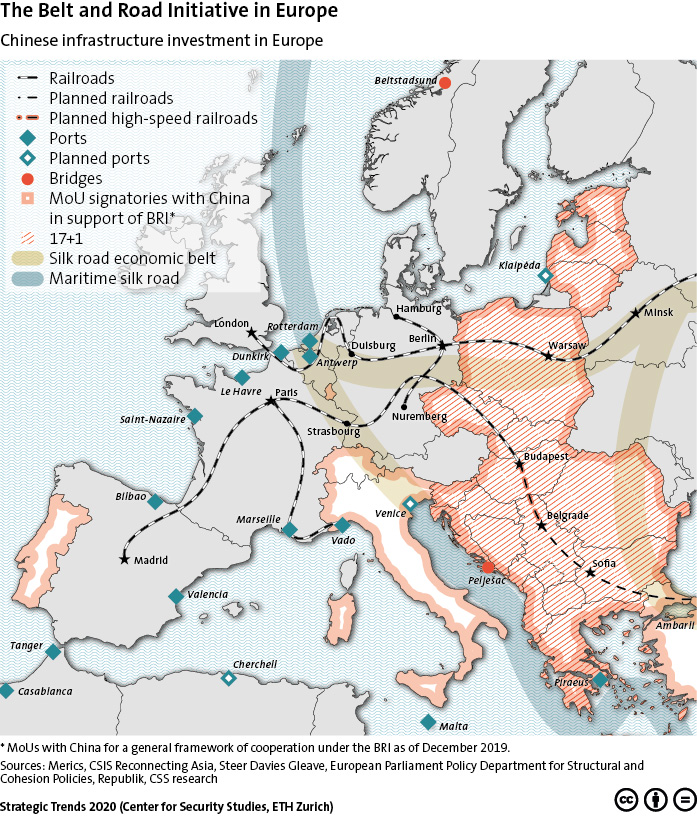 This graphic maps China’s infrastructure investment in Europe related to the Belt and Road Initiative (BRI), including planned and completed railroads, ports and bridges, among other projects.
This graphic maps China’s infrastructure investment in Europe related to the Belt and Road Initiative (BRI), including planned and completed railroads, ports and bridges, among other projects.